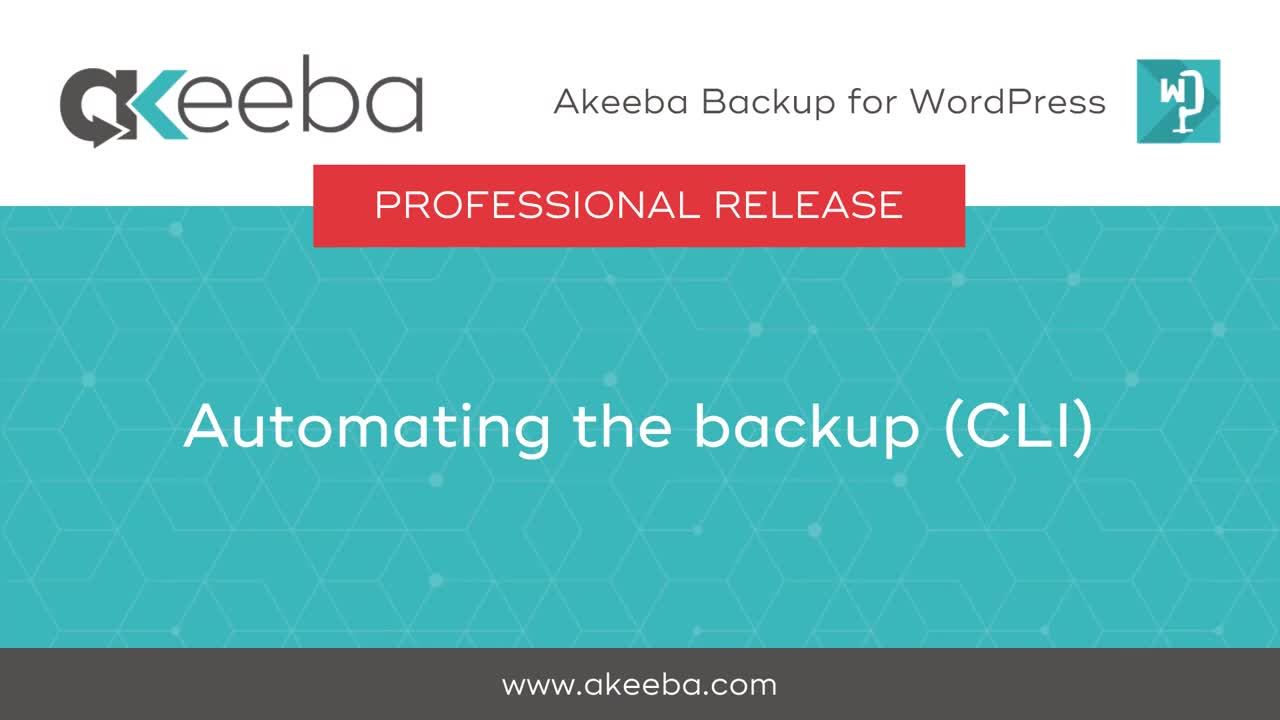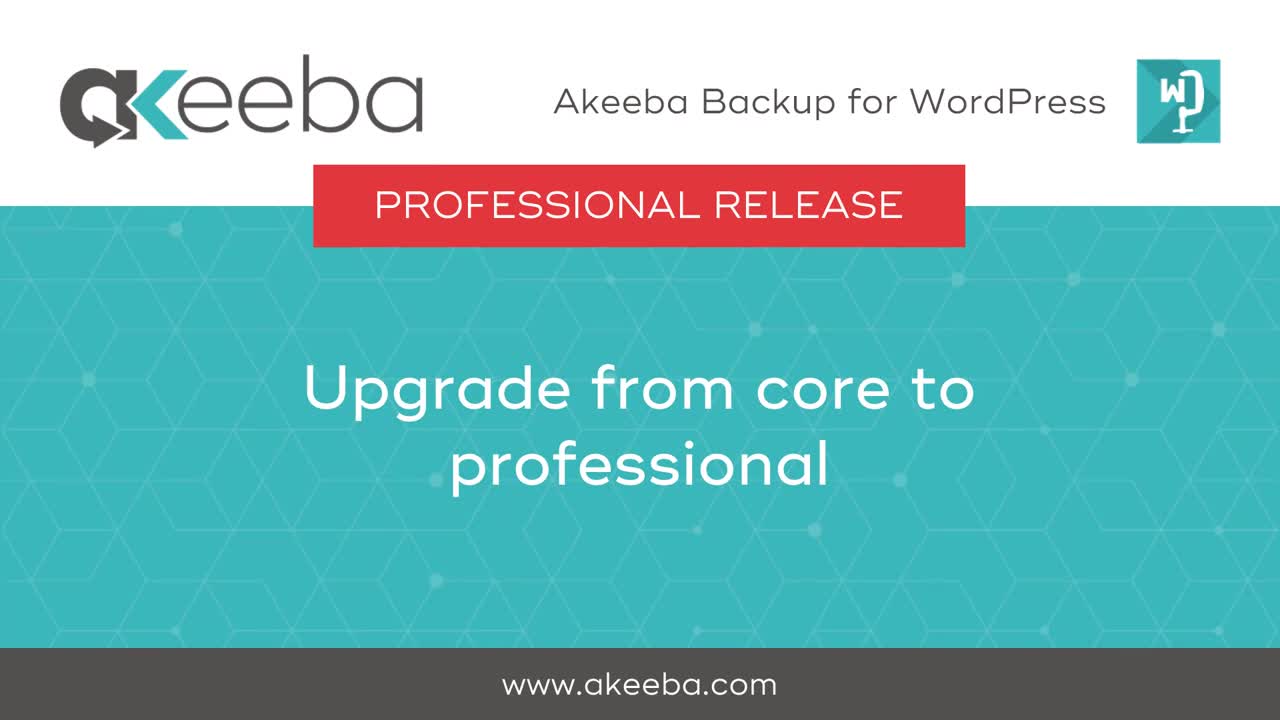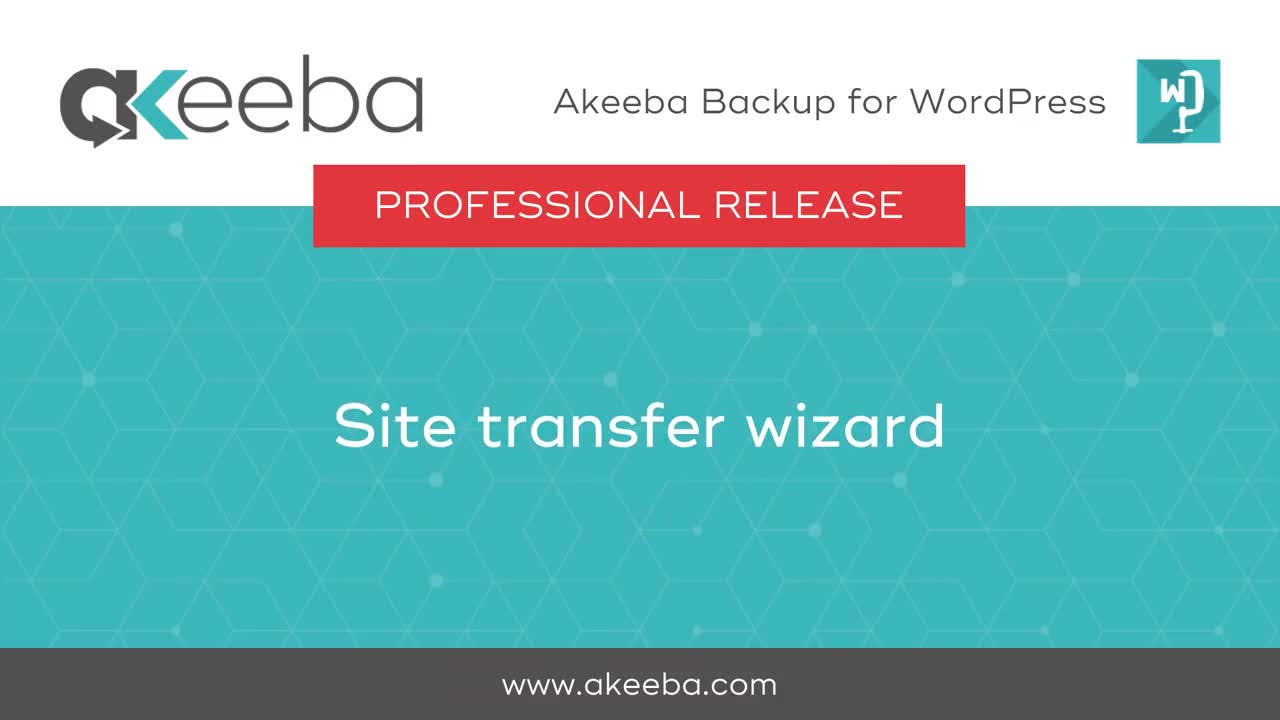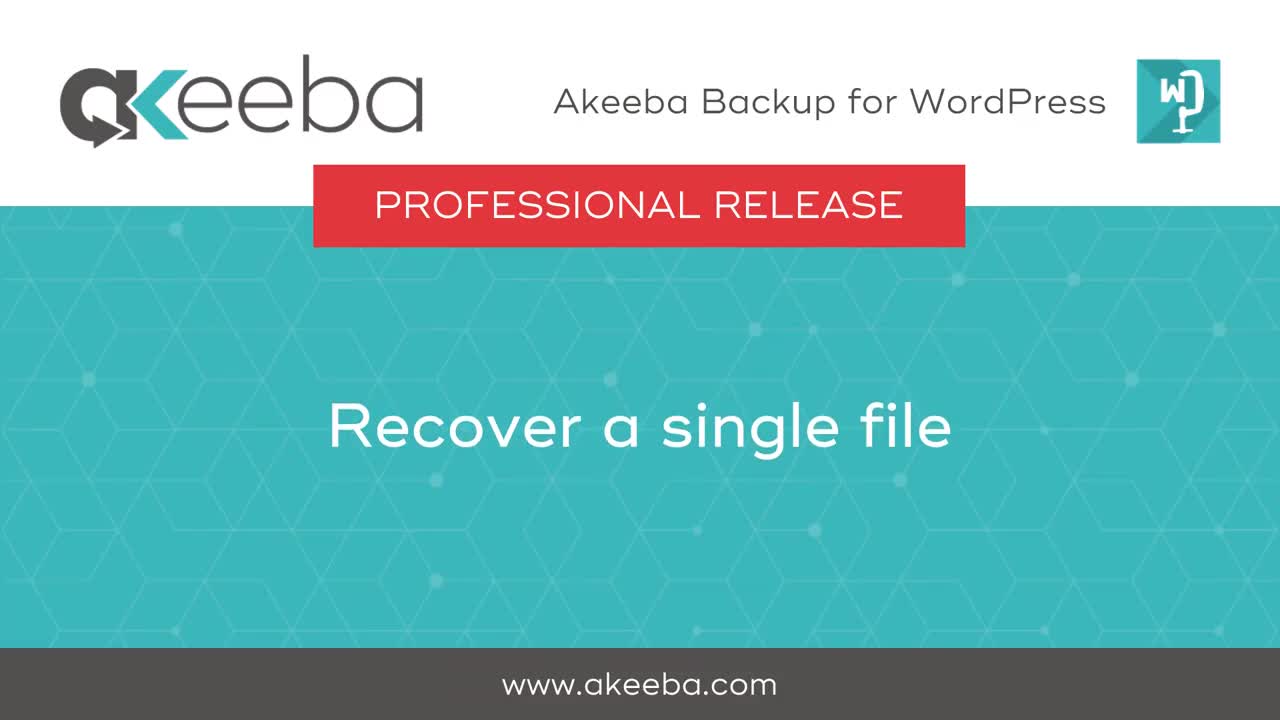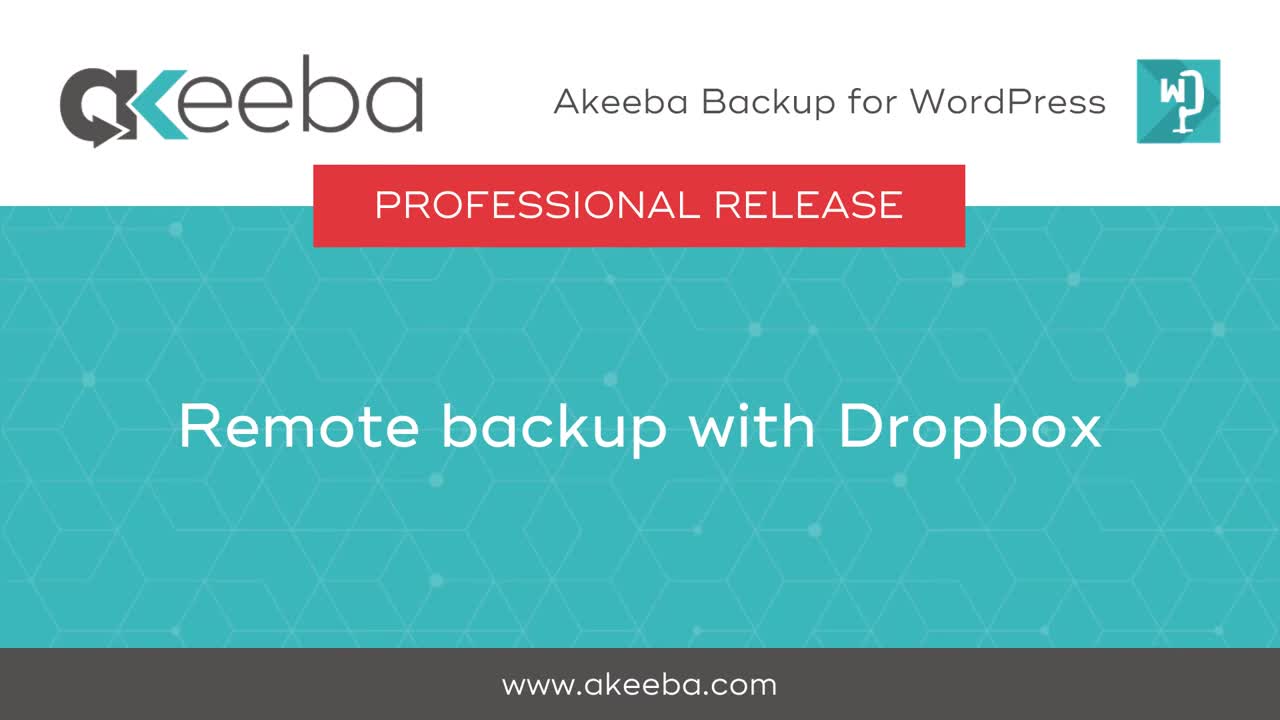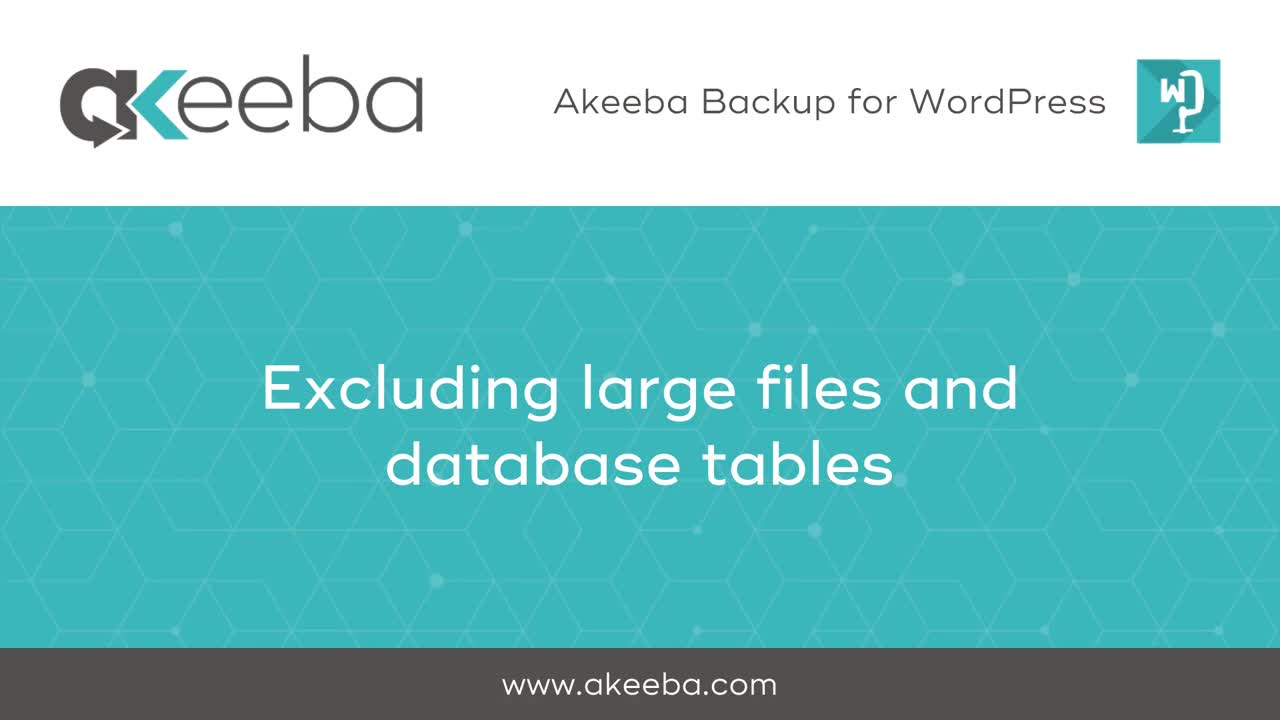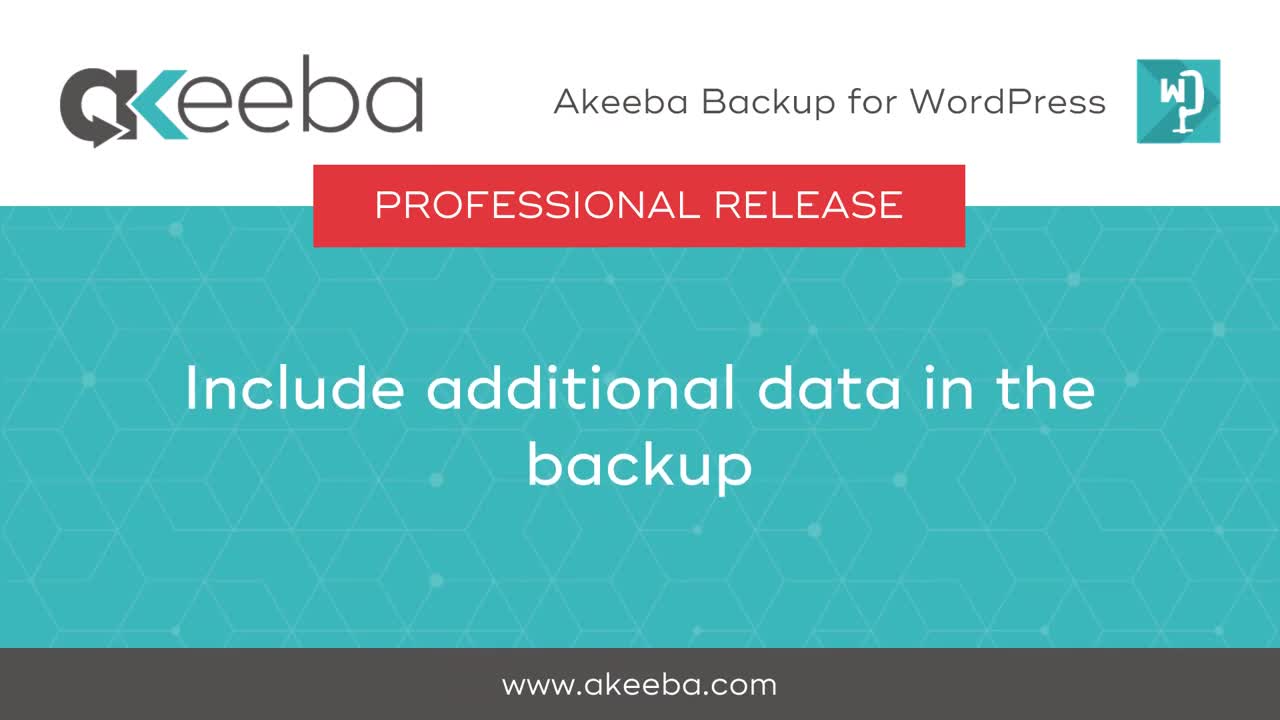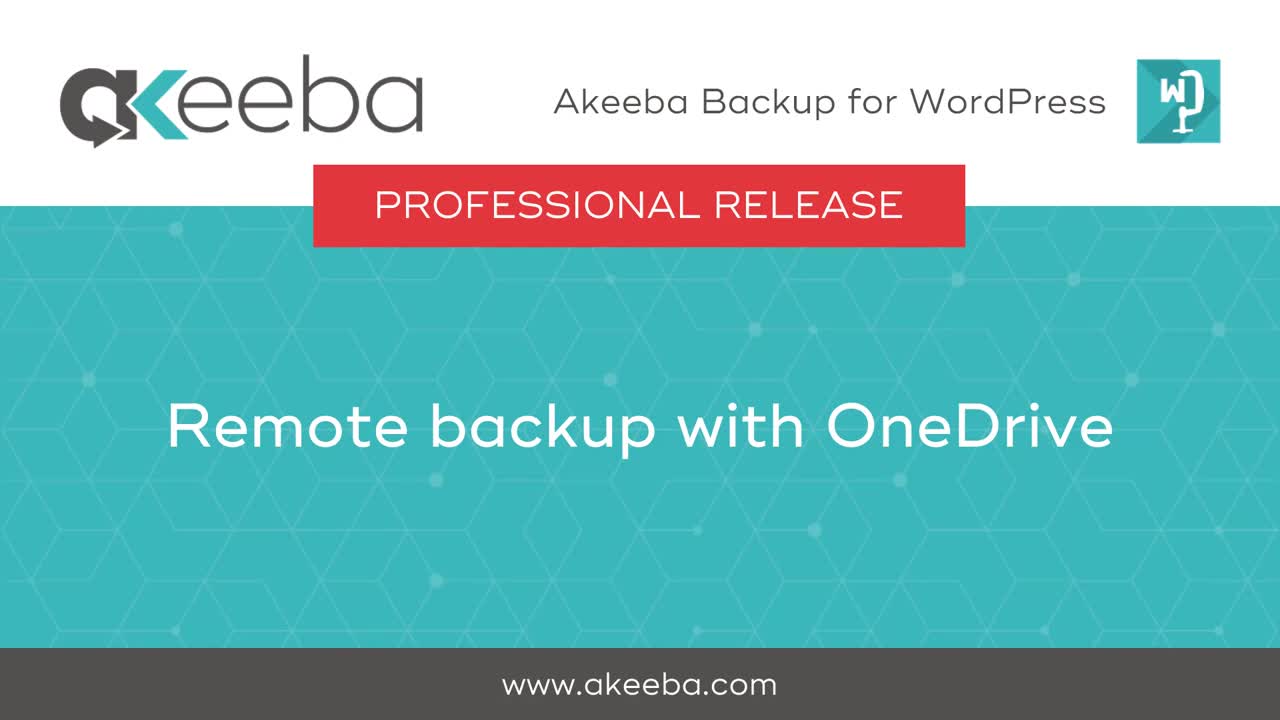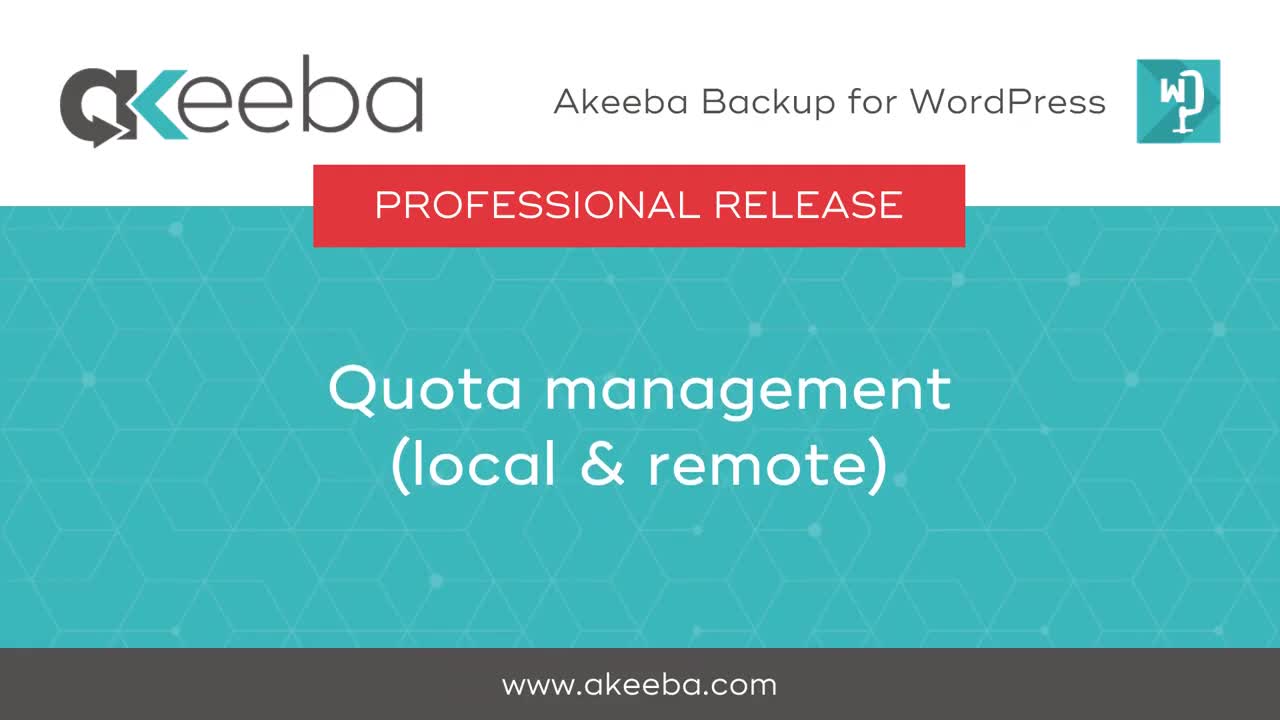Copyright 2014-2025 Akeeba Ltd
Permission is granted to copy, distribute and/or modify this document under the terms of the GNU Free Documentation License, Version 1.3 or any later version published by the Free Software Foundation; with no Invariant Sections, no Front-Cover Texts, and no Back-Cover Texts. A copy of the license is included in the appendix entitled "The GNU Free Documentation License".
Abstract
This book covers the use of the Akeeba Solo backup application for PHP-powered web sites, Akeeba Backup for WordPress plugin and its associated tools and utilities.
Table of Contents
- I. User's Guide to Akeeba Solo
- 1. Introduction
- 2. Installation, updates and upgrades
- 1. Installing Akeeba Solo (Standalone)
- 2. Installing Akeeba Backup for WordPress
- 3. WordPress roles and Akeeba Backup privileges
- 4. Using on sites with BulletProof Security installed
- 5. Using on CloudWays and other hosts which limit access to .php files
- 6. Updating to the latest version
- 7. Requesting support and reporting bugs
- 8. Understanding PHP versions
- 3. Quick Start
- 4. Akeeba Solo / Akeeba Backup application reference
- 1. First steps
- 2. Main operations
- 2.1. Configuration wizard
- 2.2. Configuration
- 2.2.1. The main settings
- 2.2.2. Database dump engines
- 2.2.3. File and directories scanner engines
- 2.2.4. Archiver engines
- 2.2.5. Post processing engines
- 2.2.5.1. No post-processing
- 2.2.5.2. Send by email
- 2.2.5.3. Upload to Amazon S3
- 2.2.5.4. Upload to BackBlaze B2
- 2.2.5.5. Upload to Box.com
- 2.2.5.6. Upload to CloudMe
- 2.2.5.7. Upload to DreamObjects
- 2.2.5.8. Upload to Dropbox (v2 API)
- 2.2.5.9. Upload to Google Drive
- 2.2.5.10. Upload to Google Storage (JSON API)
- 2.2.5.11. Upload to Google Storage (Legacy S3 API)
- 2.2.5.12. Upload to OneDrive and OneDrive for Business
- 2.2.5.13. Upload to OneDrive (LEGACY)
- 2.2.5.14. Upload to OneDrive (App-specific Folder)
- 2.2.5.15. Upload to Microsoft Windows Azure BLOB Storage service
- 2.2.5.16. Upload to OVH Object Storage
- 2.2.5.17. Upload to OpenStack Swift object storage
- 2.2.5.18. Upload to RackSpace CloudFiles
- 2.2.5.19. Upload to Remote FTP server
- 2.2.5.20. Upload to Remote FTP server over cURL
- 2.2.5.21. Upload to Remote SFTP server
- 2.2.5.22. Upload to Remote SFTP server over cURL
- 2.2.5.23. Upload to SugarSync
- 2.2.5.24. Upload to iDriveSync
- 2.2.5.25. Upload to WebDAV
- 2.3. Backup now
- 2.4. Manage backups
- 2.5. View Log
- 2.6. Troubleshooter - ALICE
- 2.7. Site Transfer Wizard
- 2.8. Import archives
- 2.9. Import archives from S3
- 2.10. Update (a.k.a. "Live Update")
- 3. Include data in the backup
- 4. Exclude data from the backup
- 5. System Management
- 6. Automating your backup
- 7. Remote Storage and OAuth2 Helpers
- 8. Miscellaneous features
- 9. WordPress CLI (WP-CLI) integration
- 5. Restoring backups and transferring sites
- 6. Information for removed or canceled features
- II. Security information
- III. Appendices
List of Figures
- 4.1. CRON Cheatsheet
Akeeba Backup for WordPress
|
Public
|
Created by alex.preyer on 2025-12-18 23:41 CST
Latest post by alex.preyer on 2025-12-19 03:53 CST
|
|
|
Public
|
Created by MaxiGraphx on 2025-12-11 09:08 CST
Latest post by nicholas on 2025-12-11 10:15 CST
|
|
|
Low priority
|
Public
|
Created by alex.preyer on 2025-12-03 04:45 CST
Latest post by alex.preyer on 2025-12-04 01:38 CST
|
|
Public
|
Created by woluweb on 2025-12-01 08:21 CST
Latest post by nicholas on 2025-12-01 10:32 CST
|
|
|
Public
|
Created by LukeDouglas on 2025-09-05 23:27 CDT
Latest post by nicholas on 2025-09-07 15:19 CDT
|
|
|
Public
|
Created by avcompinc on 2025-08-26 18:19 CDT
Latest post by avcompinc on 2025-08-27 08:44 CDT
|
|
|
Public
|
Created by LukeDouglas on 2025-08-19 00:17 CDT
Latest post by nicholas on 2025-08-19 11:40 CDT
|
|
|
Public
|
Created by mattsson on 2025-07-27 12:50 CDT
Latest post by mattsson on 2025-07-29 15:45 CDT
|
|
|
Public
|
Created by syntaxerror on 2025-04-24 02:19 CDT
Latest post by nicholas on 2025-04-24 02:24 CDT
|
|
|
Public
|
Created by jduerscheid on 2025-03-26 07:13 CDT
Latest post by nicholas on 2025-03-31 06:41 CDT
|
|
|
Public
|
Created by jduerscheid on 2025-03-26 07:42 CDT
Latest post by jduerscheid on 2025-03-27 04:58 CDT
|
|
|
Public
|
Created by RRO on 2025-03-04 04:23 CST
Latest post by nicholas on 2025-03-04 05:58 CST
|
|
|
Public
|
Created by marco3253 on 2025-02-03 09:59 CST
Latest post by nicholas on 2025-02-24 10:21 CST
|
|
|
Public
|
Created by mikelopes2025 on 2025-02-02 10:22 CST
Latest post by nicholas on 2025-02-13 01:12 CST
|
|
|
High priority
|
Public
|
Created by cesarius on 2024-12-29 08:50 CST
Latest post by cesarius on 2025-02-07 09:28 CST
|
|
Public
|
Created by damnsharp on 2025-01-13 04:58 CST
Latest post by damnsharp on 2025-01-14 07:35 CST
|
|
|
Public
|
Created by raunhar on 2024-12-21 04:12 CST
Latest post by nicholas on 2024-12-23 00:49 CST
|
|
|
Public
|
Created by Vitaio on 2024-11-19 22:36 CST
Latest post by nicholas on 2024-11-20 05:16 CST
|
|
|
Public
|
Created by raunhar on 2024-11-12 23:28 CST
Latest post by nicholas on 2024-11-13 01:55 CST
|
|
|
Low priority
|
Public
|
Created by preflight on 2024-11-05 18:42 CST
Latest post by nicholas on 2024-11-06 01:56 CST
|
Still need support?
Login or Subscribe to submit a new ticket.
(If filing a bug or you have a pre-sales request, please contact us directly.)


